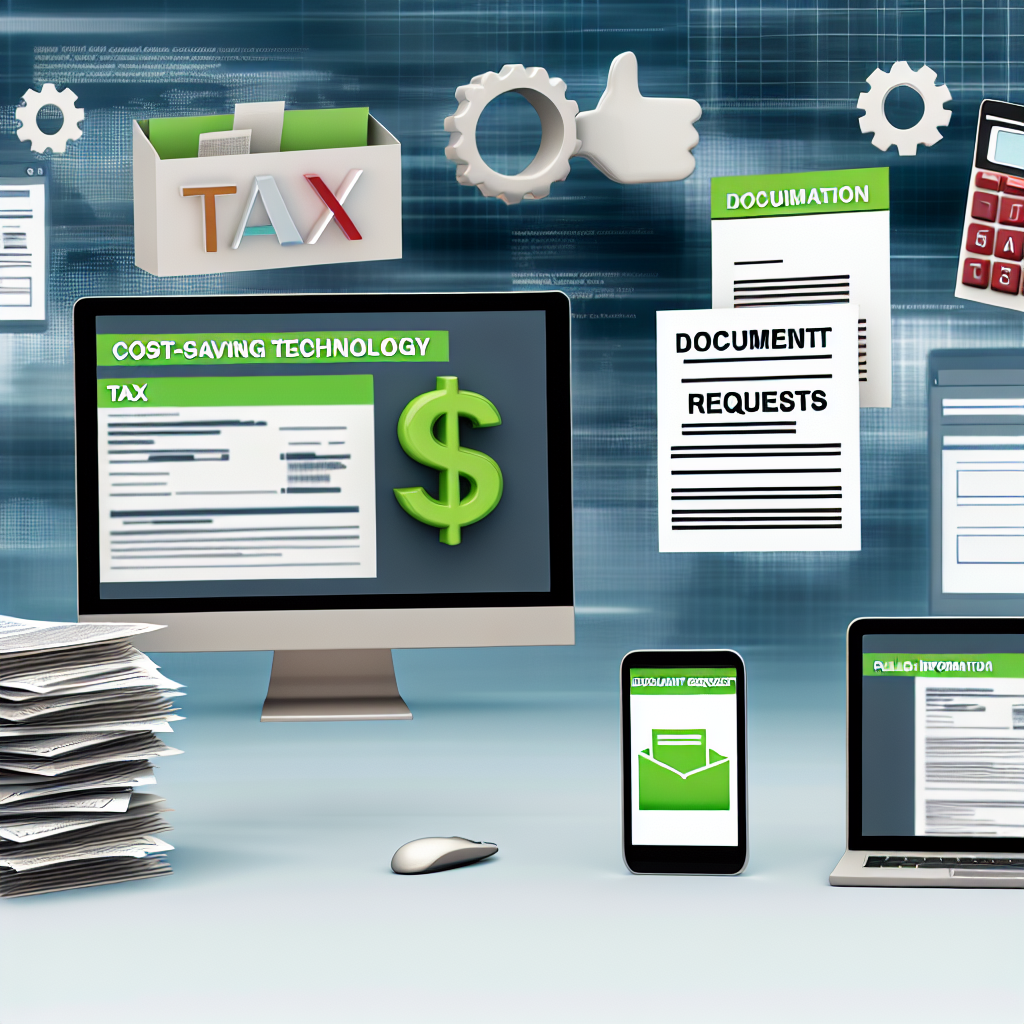Introduction
In an era where governmental efficiency is more critical than ever, the integration of cost-saving technology is becoming a focal point of public administration. Technologies like artificial intelligence, cloud computing, and automated systems not only enhance productivity but also improve citizen engagement and service delivery. Government services, particularly in the areas of tax assistance, document requests, and public information dissemination, benefit immensely from these technological advancements. This article explores the best use cases for cost-saving technology in these essential government functions, highlighting the transformative power of these innovations.
Tax Assistance Technology
Tax assistance is one of the most critical services provided by the government. Traditionally labor-intensive and complex, this function has seen considerable enhancements through technology. One of the most effective uses of cost-saving technology in this realm is the implementation of online tax filing systems. These platforms allow citizens to complete and submit their tax returns electronically, significantly reducing the need for physical paperwork and in-person visits to tax offices.
Moreover, automated chatbots serve as a frontline resource for taxpayer inquiries. Available 24/7, these chatbots can answer frequently asked questions, guide citizens through the tax filing process, and help resolve common issues like payment processing. By utilizing natural language processing technologies, these chatbots can understand and respond to various queries, saving time for both taxpayers and government employees.
Cloud-based solutions are another excellent example of cost-saving technology in tax assistance. They facilitate real-time access to information while ensuring data security and compliance with regulations. By centralizing tax data, agencies can streamline their operations, reduce errors, and enhance overall efficiency. Additionally, cloud technology enables easy integration of advanced analytics tools, allowing governments to leverage taxpayer data for targeted outreach and fraud detection.
Document Requests Automation
Document requests represent another area where cost-saving technology can enhance government service delivery. Traditionally, this process involved bureaucratic hurdles, requiring citizens to navigate complex forms and long waiting times. However, digital solutions have revolutionized this experience by providing streamlined requests through online portals. These portals are designed to guide users through the document request process step by step, minimizing confusion and errors.
Furthermore, implementing a document management system can significantly cut costs associated with paper-based storage and retrieval. Such systems allow for the electronic filing of documents, making archives easily searchable and accessible. Citizens can request documents online and receive them via secure email or through a digital download link, enhancing convenience and improving service speed.
In addition, combining document request systems with machine learning algorithms can enable predictive analytics. For instance, analyzing historical data on document requests can help government agencies predict peaks in demand, leading to better resource allocation and staff management. Overall, technology not only streamlines the request process but also optimizes operational effectiveness, creating a win-win situation for both the government and the public.
Public Information Access
Access to public information is a cornerstone of democracy and good governance, and technology plays a vital role in making this information readily available. Traditional methods of disseminating public information, such as printed reports and public notices, can be slow and cumbersome. However, modern digital platforms equip governments to provide information quickly and transparently.
One key technology in this realm is the development of integrated databases and online portals. These platforms allow citizens to access various government data sources from a single location, facilitating transparency and accountability. For example, state and local governments can publish up-to-date information on budgets, spending, and legislative activities, helping citizens stay informed about government operations.
Furthermore, social media and mobile applications enhance public engagement, allowing citizens to receive real-time updates directly on their devices. This improves accessibility, especially for younger demographics who rely heavily on smartphones. By adopting responsive web design, government websites can ensure that information is accessible across multiple platforms, enhancing user experience and driving higher engagement levels.
Future Potential and Challenges
While cost-saving technologies offer myriad advantages, governments must remain vigilant about potential challenges. Issues relating to cybersecurity should be a prime concern, as incidents of data breaches could undermine public trust in government systems. Therefore, continuous investment in robust cybersecurity measures is crucial to protect sensitive data.
Moreover, ensuring equitable access to technology is vital. While many citizens benefit from advanced digital services, there remains a significant population that may lack access to the internet or the necessary digital literacy skills. To counter this, governments can develop training programs and community outreach initiatives aimed at enhancing digital skills, ensuring that no citizen is left behind.
Conclusion
In summary, the integration of cost-saving technology into government services, particularly in tax assistance, document requests, and public information access, is not just a trend; it represents a fundamental shift in how government communicates with and serves its citizens. By embracing these innovations, government agencies can improve efficiency, reduce operational costs, and enhance citizen satisfaction. As technology continues to evolve, it offers an opportunity for governments to build a more informed, engaged, and empowered public. However, it is essential that governments address the challenges accompanying these advancements to ensure that all citizens can benefit from the digital transformation of public services.

